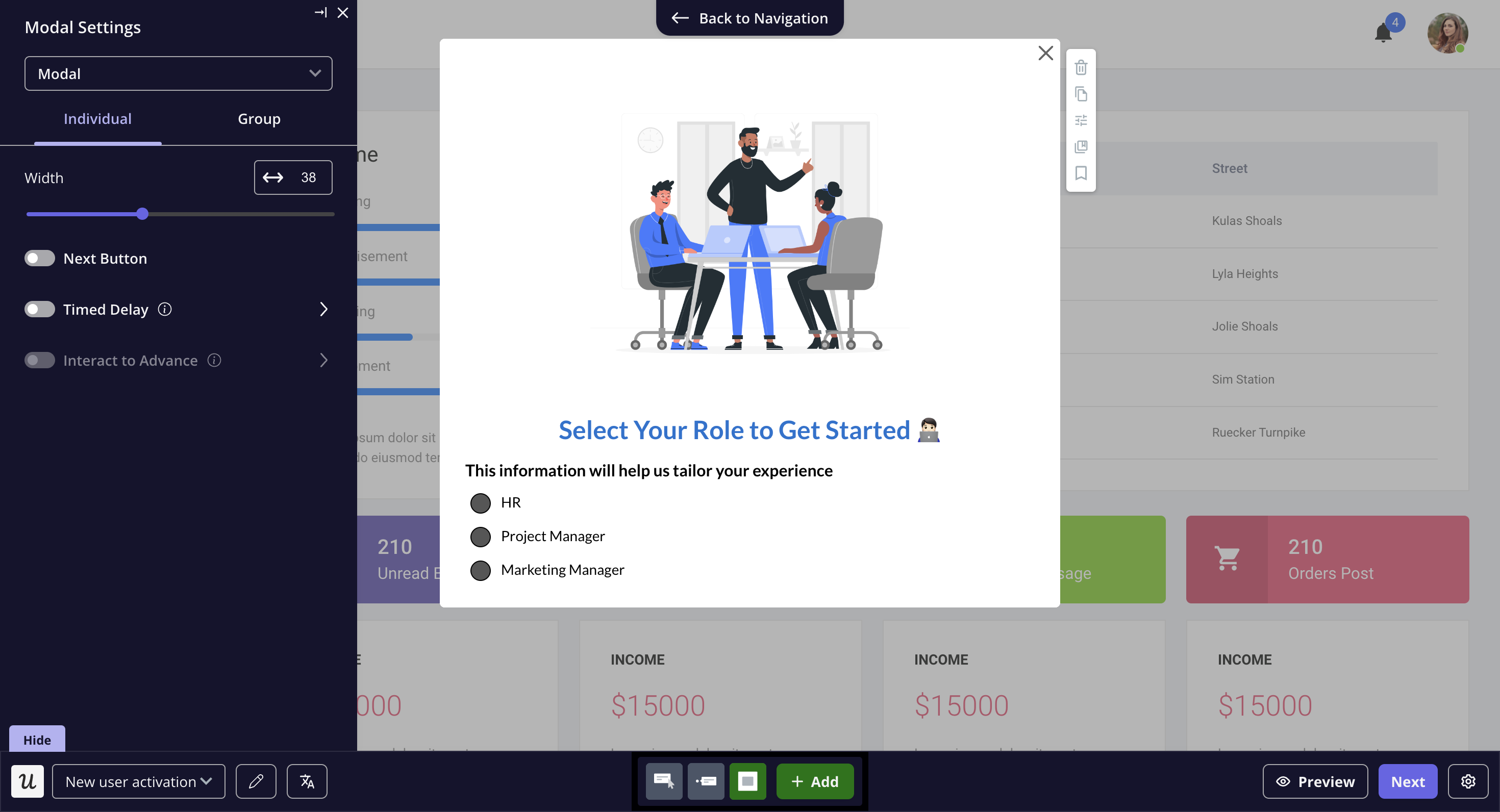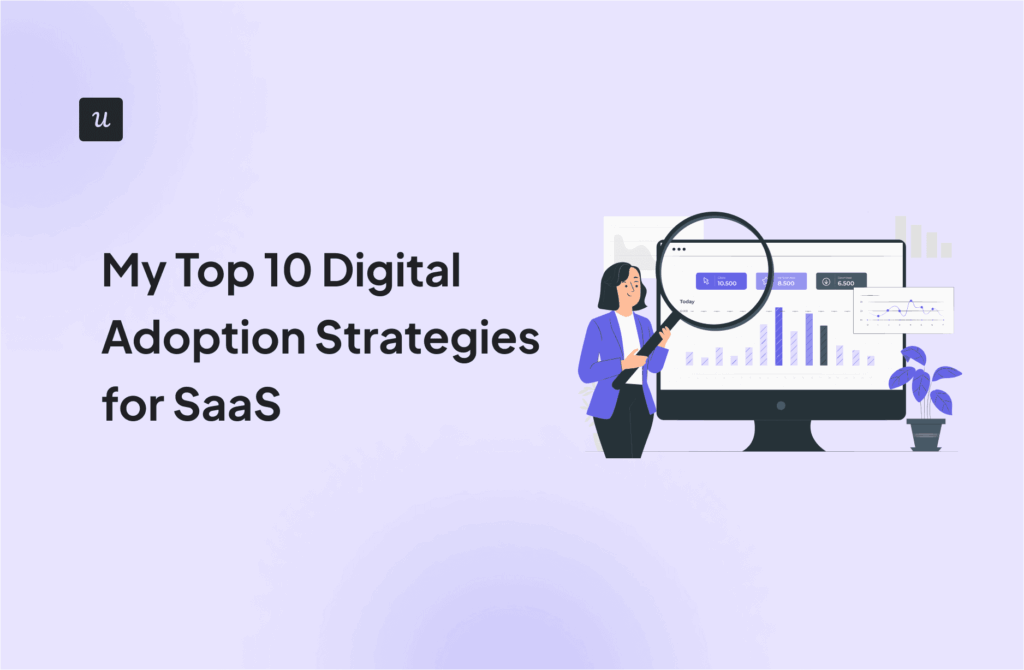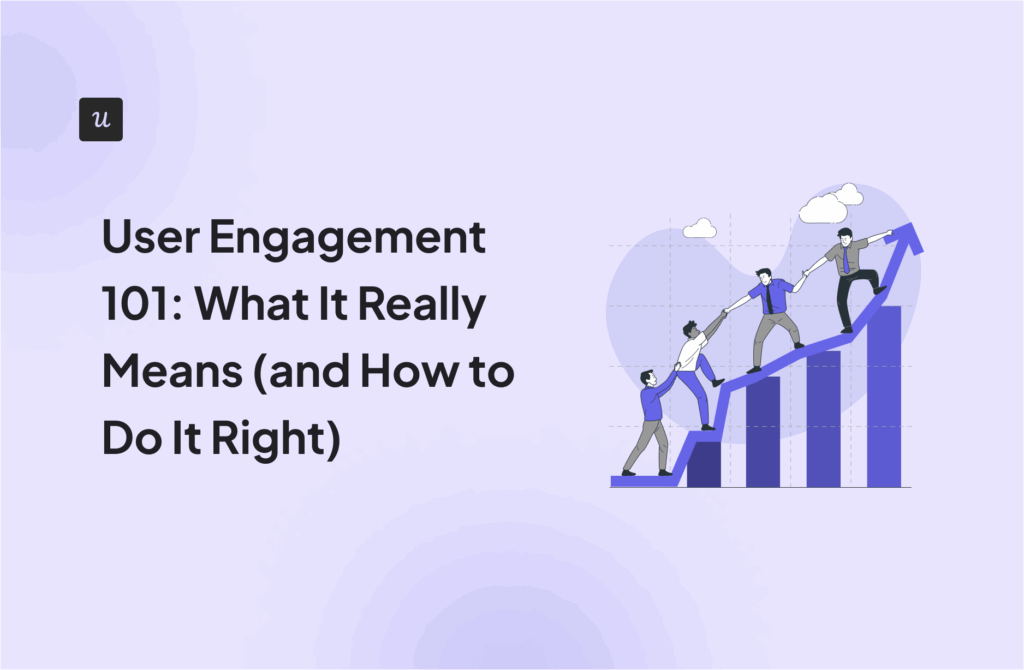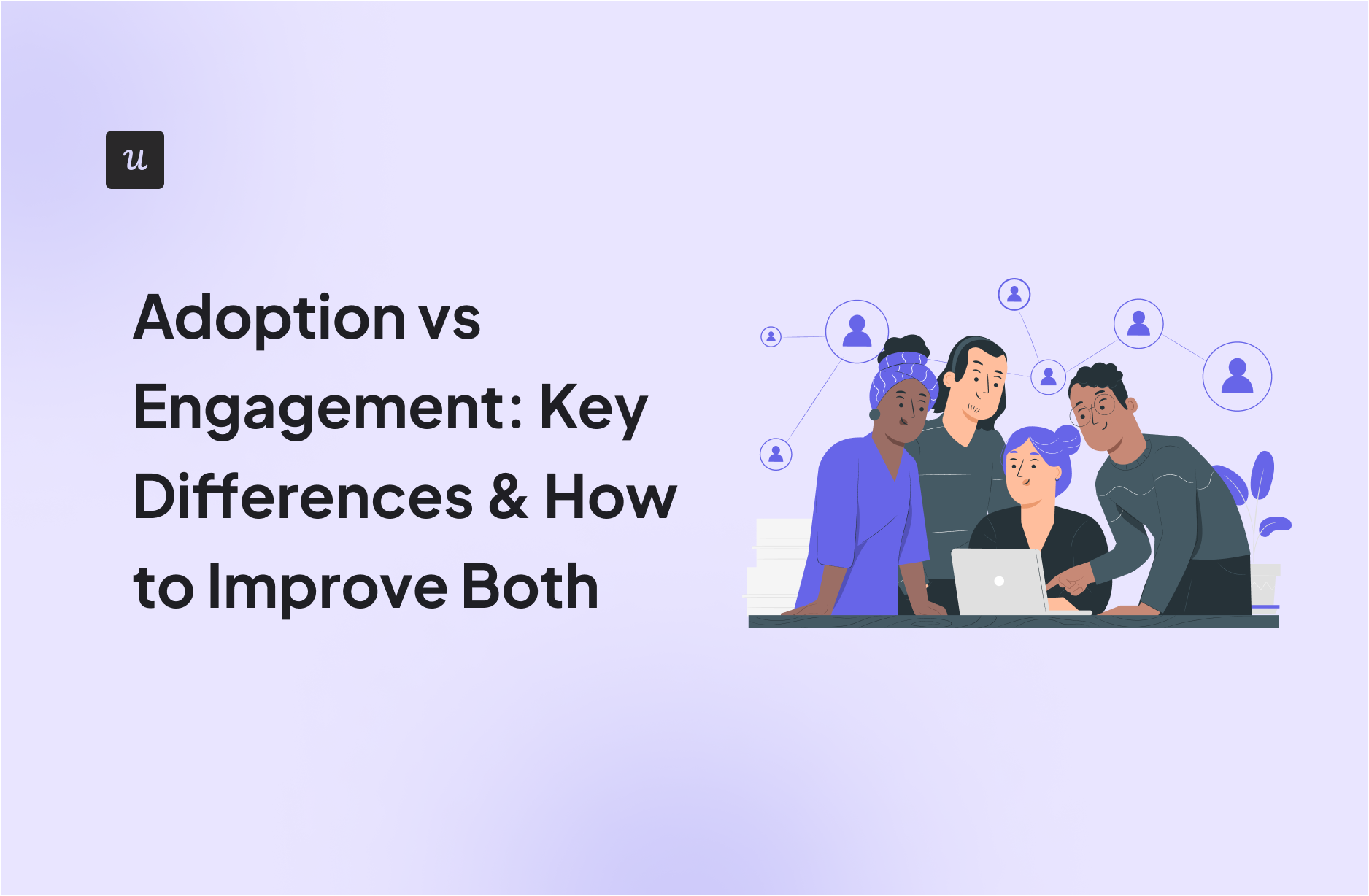
Adoption vs engagement metrics: how are they different or are they the same?
Product adoption and customer engagement are not the same. Thus, the metrics you use to track adoption and engagement should be different.
Your customers must stay engaged with your product so you can earn revenue from your SaaS company. However, engagement alone isn’t enough. Your customers need to be aware of all existing or new features relevant to them and adopt them down their customer journey.
So, let’s see what adoption and engagement metrics are all about and how you can improve them.
Try Userpilot Now
See Why 1,000+ Teams Choose Userpilot

What is product adoption in SaaS?
Product adoption covers the user journey from users’ initial interest in your product to its active and valuable use.
Your product is “adopted” when a user starts using your product to accomplish his goals.
You need to ensure customer success so that they become loyal, long-term users and, preferably, advocates.
What are the key product adoption metrics?
You can’t have a great product adoption strategy without tracking the right metrics to measure multiple aspects of adoption.
Here are the key product adoption metrics that set adoption apart from engagement.
1. Time to Value
Time to value is the time a user takes to realize the expected value of your product. It measures the time taken by a user to reach the activation point.
Thus, reducing the time to value is critical to ensuring that users find value as soon as possible.
A long TTV will likely lead to low trial conversion rates since users are having difficulty experiencing value. This means that users won’t move forward in their product adoption journey.
On the other hand, a short time to value suggests low friction in the journey which creates an easier and faster route to finding value. The shorter the TTV, the greater the customer success and the lower the churn.
2. User activation rate
Activation occurs when new users perform specific key actions inside your product that make them experience its value. The user activation rate gives the percentage of users who reach the activation point.
At first, you need to define the in-app events users need to complete to benefit from the product and activate it. Then, count how many users have performed these events in a given period.
To calculate the activation rate, divide the number of users who reached the activation point/milestone by the number of users who signed up, then multiply the ratio by 100.
The activation rate varies according to the type of product, so it’s hard to find an activation benchmark. This is because the activation events vary among the different businesses, products, use cases, and user personas.
3. Feature adoption rate
As customers move along their adoption journey, they adopt more and more features relevant to their use case.
You can measure the feature adoption rate by dividing the number of monthly active users of a feature by the number of user logins in a specific period and multiplying the result by 100.
Along with other feature adoption analytics, tracking the feature adoption rate helps you make informed decisions about your product adoption strategy. So, you can build a set of experiences that will guide users along the way.
What is user engagement in SaaS?
User engagement is the quality and frequency of your user’s interactions with your product. It reflects the relationship your customers have with your brand.
User engagement varies based on the type of business and product. For SaaS businesses, user engagement differs according to the stage of the user journey a user is in.
As customers move further down the journey, it suggests they have meaningful experiences with your product that keep them engaged and loyal.
What are the key user engagement metrics?
User engagement metrics are the data points you can measure depending on user interactions.
Observing user behavior in a product analytics tool like Userpilot, user interviews, and session recordings can help you see patterns in engagement.
So, let’s go over the key user engagement metrics to track:
- Active users
- Product stickiness
- Customer engagement score
- Customer churn rate
1. Active users
Active users are one of the important engagement metrics to measure. It is the number of users who regularly interact with your product within a specific time frame. It indicates the level of ongoing engagement and product usage.
For example, if you see a decrease in the number of active users, it means something is not working. In this case, you should crosscheck with user feedback and user behavior analysis to improve user engagement.
Product managers typically track 3 types of active users:
- Daily active users (DAUs)
- Weekly active users (WAUs)
- Monthly active users (MAUs)
2. Product stickiness
The more customers are engaged with your product, the longer they’ll stick around. This can be measured by the product stickiness ratio.
To calculate it, simply divide the number of daily active users (DAUs) by the number of monthly active users (MAUs).
To find the DAUs and MAUs, the total number of logins won’t be able to shed much light on user engagement since many users can get frustrated by something after logging in and then leaving the app.
Therefore, you should look at whether users engage with the core features and the amount of average time they spend inside the app. You can track these using a tool like Userpilot, which lets you tag key features to measure how much of your customer base engages with them.
The overall goal should be to maintain a stickiness ratio of 1, meaning everyone is an active user who gets value all day, every day. Conversely, for a complex product, a ratio as low as 0.4 may be acceptable since users won’t want to engage every day.
3. Customer engagement score
The customer engagement score (CES) tells you how engaged your free trial prospects and paying customers are with your product. The greater the score, the happier and more engaged the users are.
First, you need to fix specific engagement events to track, such as key features customers engage with (or not) and frequency of product usage. The events you select should be based on the type of your product.
Then assign an engagement score to each event on a scale of 1-10 depending on its importance to your product and the user personas. Find the total event value by multiplying this score by the number of times the event took place in the past x days.
The CES is the summation of all the total event values.
Furthermore, you can track feature engagement to dig deeper into user engagement as well as focus on the specific issues that affect your overall product adoption.
As previously mentioned, you can track feature engagement by tagging a specific feature. Userpilot lets you do this code-free.
4. Customer churn rate
Disengaged customers are the most likely to churn, which makes it crucial for you to track and reduce churn. It’s impossible to reach zero churns, but you can lower it to a point where your revenue exceeds the amount you lose from cancellations.
Customer churn rate is the percentage of users who leave your product over a specific period. It’s equal to the number of customers lost during the period by the number of customers at the beginning of the period, multiplied by 100.
Churn is on the flip side of retention. The lower your churn, the more existing users you retain. According to Harvard Business Review, increasing the retention rate by 5% can boost your profitability up to 95%!
You can use in-app churn surveys to know why users are leaving and take steps to address the issues. Moreover, you can suggest alternatives to churning, such as pausing their account while you make a product improvement.
Engagement vs adoption: What’s the difference?
While measuring engagement is similar to measuring adoption, the latter gives the percentage of key features your customers are using. Customers can be highly engaged by only using a few features, but the adoption metrics let you know the number of unique features in use.
Adoption may be a consequence of engagement. As users engage more with your product and find its features useful, they’re likely to choose to subscribe to your business and adopt your product.
Tips to improve product adoption
Now, let’s see how you can get more of your users to adopt your product. Here are two tips for you:
- Use interactive walkthroughs to drive user adoption
- Offer in-app self-service support to help users reach activation points effectively
Use interactive walkthroughs to drive user adoption
Interactive walkthroughs are powerful tools for user onboarding. The initial activation won’t make your users adopt all the features of your product. This is where secondary onboarding comes in to familiarize your users with relevant secondary features and drive adoption.
Unlike product tours that pour down too much information in one go, interactive walkthroughs capture users’ attention by encouraging them to learn by doing.
Be it for a new feature or an existing one, you can offer walkthroughs contextually so that customers can educate themselves on the feature right when they need it.
Below is an example of Kommunicate’s interactive walkthrough that provides a step-by-step guide on chat widget styling.
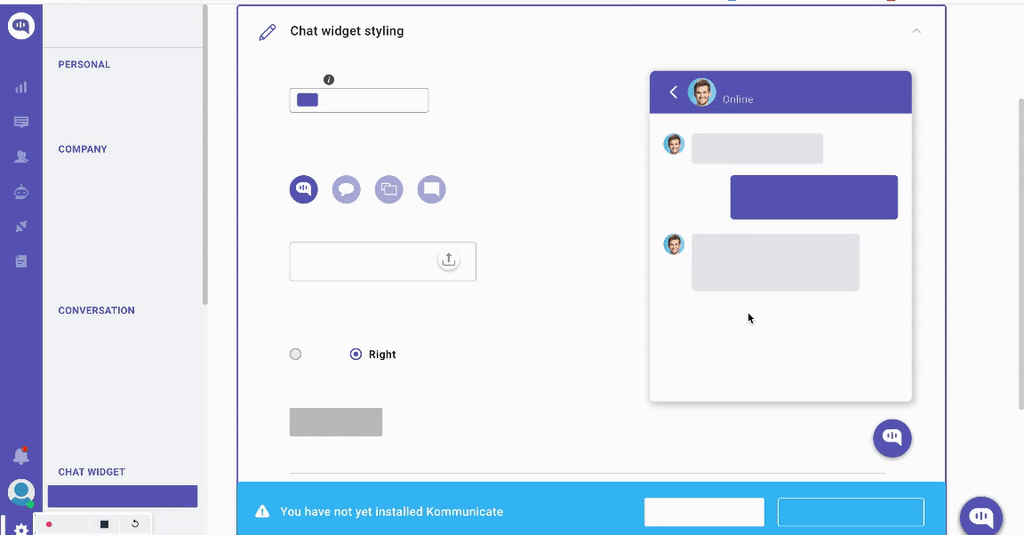
Offer in-app self-service support to help users reach activation points effectively
In-app self-service support allows users to solve their own issues, especially the frequently occurring ones. Thus, they don’t have to wait around for your support team to be available.
Self-service support gives users some control over their experiences, which ignites a feeling of achievement and autonomy.
Users are less likely to get frustrated in their process of learning how to use your product and reach activation points. As the resolution time decreases, users can quickly perform all the actions needed to find value and activate.
Knowledge bases and help centers are great for providing self-service support. Here’s an example of Userpilot’s resource center with elements like FAQs and open chat options.
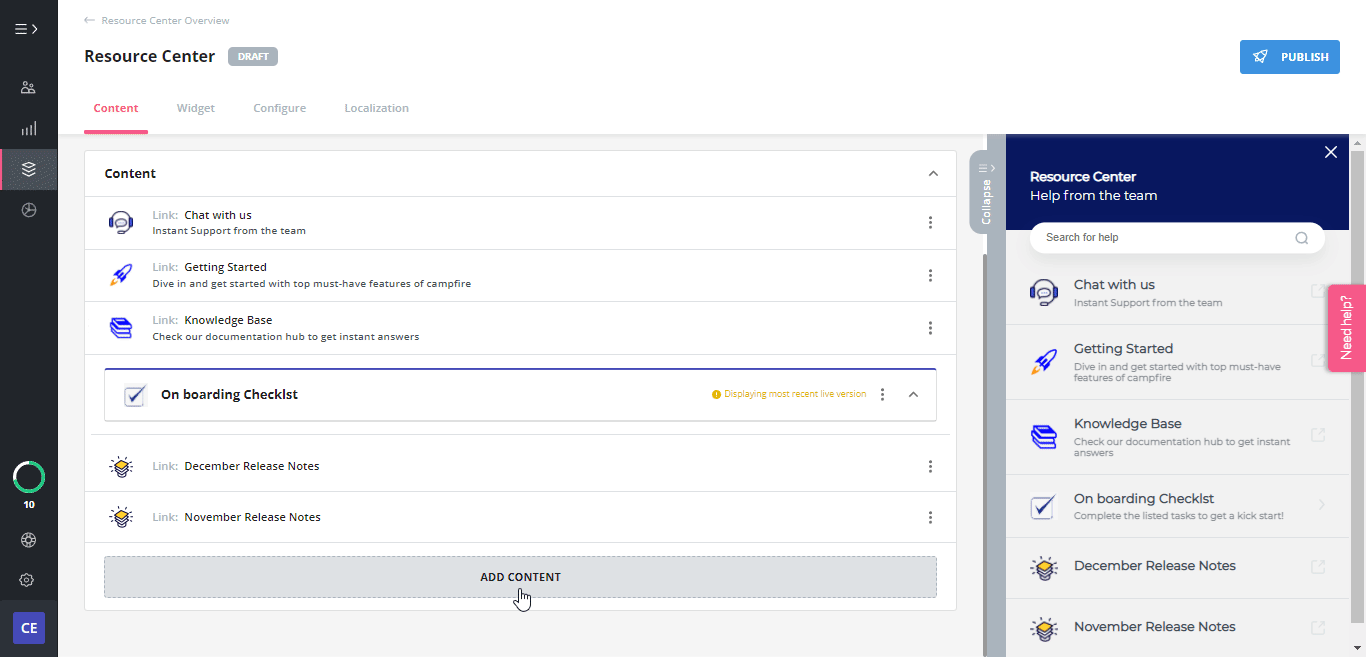
Tips to improve user engagement
Let’s move on to how your customer success team can make your product highly engaging for customers.
- Use welcome screens to personalize the onboarding experience
- Use gamification to increase user engagement score
Use welcome surveys to personalize the onboarding experience
Greet each user with a personalized onboarding experience right after they sign up for your product. Welcome screens aren’t just for greeting, though.
Welcome screens help you create a good first impression by not only introducing your product but also setting the right expectations.
You can include a microsurvey in the welcome screen asking for users’ information such as user role, jobs to be done, etc. Such data can be used for personalization or segmentation to trigger relevant in-app experiences. You can easily create one without coding using Userpilot
Use gamification to increase user engagement score
Add more excitement to your onboarding flow by introducing gamification.
A gamification strategy involves using a “reward” as an incentive to encourage more of some desired behaviors. These rewards make the product experience more fun, competitive, and thus, engaging.
The most widely used gamification elements are:
- Badges
- Discount coupons
- Leaderboards
- Points
- Elements of rivalry among users.
Moreover, gamification gives users a periodic reminder of how much closer they got to their goals, which serves as an inspiration to keep pushing forward. Users can freely choose to participate without you punishing them for failing to perform a task.
Conclusion
Customers should engage with all important features they may need and experience value from them to drive both engagement and user adoption.
Tracking the right metrics is key to getting valuable insights and picking out the right engagement and adoption strategies.
Want to significantly improve your adoption and engagement metrics? Book a Userpilot demo and see how your customer success teams can drive more retention.

